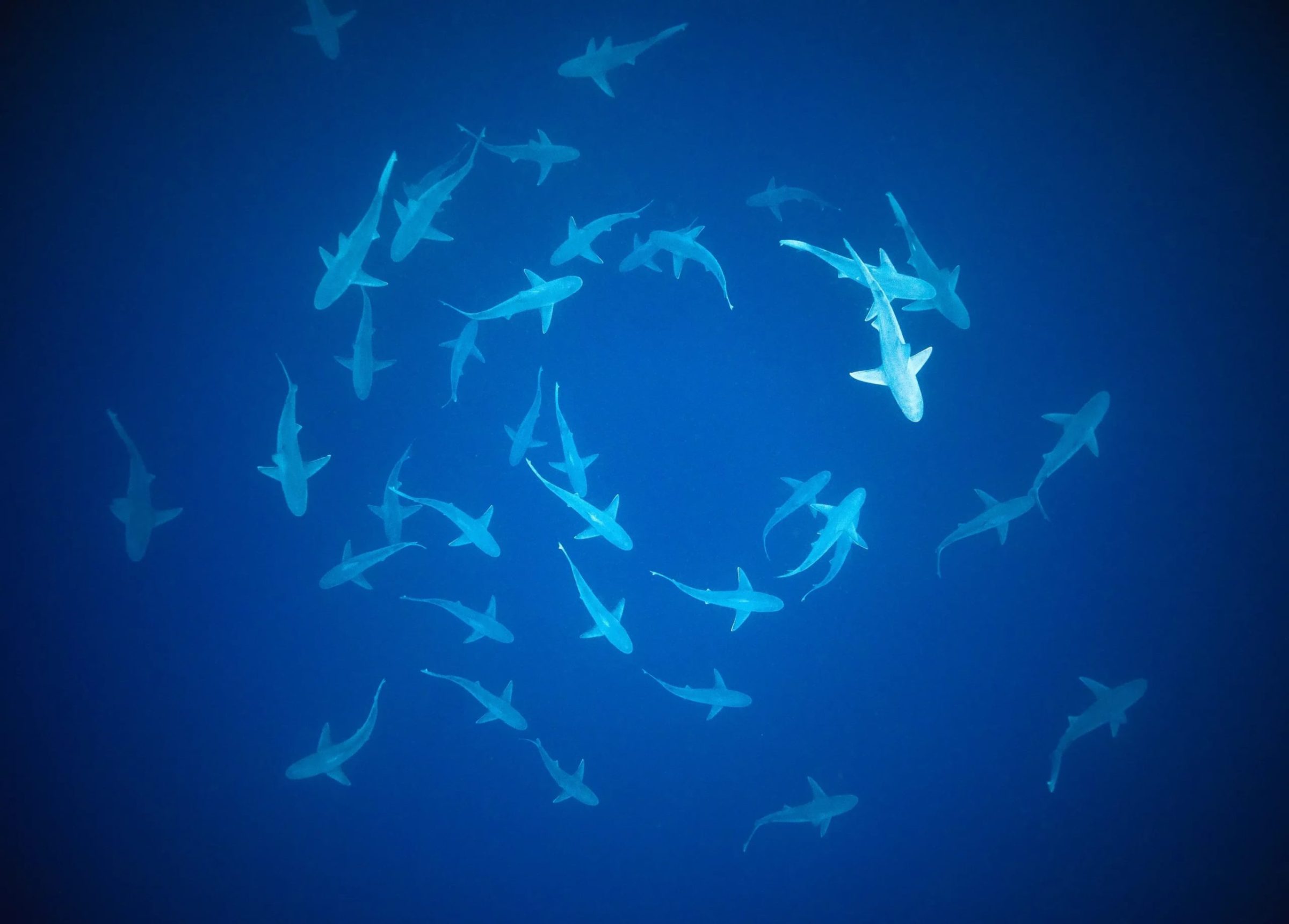The Overfishing of Sharks

In order to properly understand and conserve any aspect of marine life, the demographic and diversity of a species or ecosystem must be studied. Sharks are among the top apex predators in the ocean and provide scientists with various outlooks on an ecosystem’s trophic networks, health, and biodiversity. These aspects are associated with shark populations due to the elasmobranch’s importance as keystone species in marine ecosystems, meaning that they protect the diversity of a food chain by maintaining levels of predatory fishes and thus, every organism at every trophic level. Without sharks, food chains would collapse, and biodiversity would be lost. At every trophic level, the consumption by a predator species keeps the populations of prey species in check, but without a top apex predator, such as sharks, each level would be left unrestricted. Thus, the target species of sharks would be plentiful and soon take over their prey species in the trophic level below them, wiping them out and contributing to a cascade of this effect at every level. This trophic cascade, and depletion of shark populations as a whole, has been seen throughout ecosystems across the globe due to finning, overfishing, pollution, and habitat loss.
The oceans’ biodiversity is under immense threat from marine pollution and habitat loss, but the most ominous is arguably the overarching effects of overfishing. Overfishing is detrimental to marine landscapes due to fishing tactics, such as longlining, that ruin fragile habitats. Lines, nets, and other fishing-related debris are also among the top contributors to ocean pollution, contributing to over half of the plastic pollution found in the Great Pacific Garbage Patch. In addition, overfishing noticeably facilitates the immense loss of fish species biodiversity and population sizes and impacts species that interact with those target species in marine ecosystems. Thus overfishing, apex predator or not, is arguably one of the worst contributors to marine community degradation and loss of biodiversity.
The key to protecting against the overfishing of any apex predator is to understand the species at risk. To successfully conserve and protect vulnerable ecosystems and marine organisms from overexploitation and loss of biodiversity, their migrations, reproduction periods, and risk factors need to be understood. For many species of sharks, much research has been done to understand their migratory patterns, where and why they are at risk, and their common reproduction grounds. Migration to warmer waters during autumn and winter seasons is common in several species of sharks in the Pacific waters because most sharks are ectotherms; meaning they need to be in warm temperatures to regulate their body temperatures. Certain nomadic patterns of several species of sharks suggest that some yearly migrations to warmer southern waters might be due to mating tendencies and nursery purposes. Studies suggesting shark migrations to various known nurseries and mating grounds surrounding the Hawaiian Islands by specific species such as the Scalloped Hammerhead Shark and Galapagos Shark have been recorded for several years. These migrations aimed at reproductive purposes are vastly significant for conservation resolves due to the increased risk that the influx of populations of both adult and juvenile sharks face in mating and nursery areas.
Marine Protected Areas are locations in which fishing and hunting are banned so that the species there can mate, reproduce, and live significantly less affected by human life than in other areas around the world. The implementation of MPAs in the Pacific could help the shark population on the mend and create a healthier and more sustainable ecosystem overall. The Hawaiian Islands are home to many small conservation areas such as Hanauma Bay and many restricted fishing areas along the coasts but implementing major MPAs could significantly benefit Hawaii’s local marine life even further. The implementation of Papahānaumokuākea Marine National Monument has helped heal and maintain amazing biodiversity in the remote Pacific region. Conserving and protecting more local waters should be of utmost importance to our local government to help save and heal our local ecosystems and marine life populations that face threatening and injurious factors every day.
